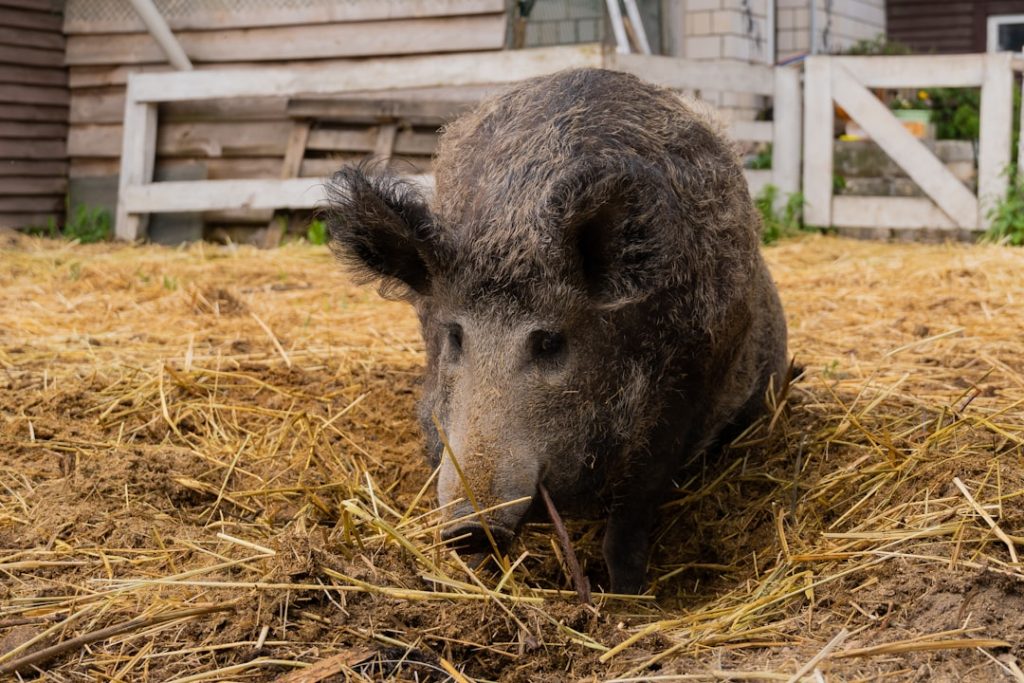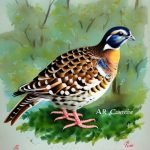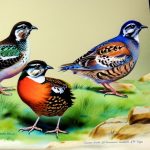Quail breeding is a rewarding and profitable venture for those interested in poultry farming. Quails are small, ground-dwelling birds that are known for their fast growth and high egg production. They are relatively easy to care for and can be raised in small spaces, making them an ideal choice for backyard breeders and commercial farmers alike. Before starting a quail breeding operation, it’s important to understand the basics of quail breeding.
Quails reach sexual maturity at around 6-8 weeks of age, and they can lay eggs as early as 7-8 weeks old. They are prolific layers, with some species laying up to 300 eggs per year. Quails are also known for their high hatchability rates, with most eggs hatching within 17-18 days of incubation. When breeding quails, it’s important to provide them with a balanced diet that includes a high-quality commercial feed, as well as access to fresh water and grit for digestion. Additionally, quails require a well-ventilated and clean living environment to thrive and reproduce successfully. Understanding the basics of quail breeding is essential for anyone looking to start a quail breeding operation.
Quail breeding can be a profitable venture, as quail eggs and meat are in high demand in many parts of the world. Quail eggs are considered a delicacy in many cultures and are known for their nutritional value and health benefits. Quail meat is also prized for its tenderness and flavor, making it a popular choice for gourmet dishes. By understanding the basics of quail breeding, breeders can capitalize on the high demand for quail products and establish a successful and sustainable quail breeding operation.
Table of Contents
- 1 Choosing the Right Quail Species for Breeding
- 2 Setting Up a Quail Breeding Environment
- 3 Breeding and Incubating Quail Eggs
- 4 Caring for Quail Chicks
- 5 Health and Disease Management in Quail Breeding
- 6 Marketing and Selling Quail Products
- 7 FAQs
- 7.1 What is the best environment for breeding quails in Australia?
- 7.2 What do quails eat and how should they be fed during breeding?
- 7.3 How do you select breeding stock for quails in Australia?
- 7.4 What are the key considerations for breeding quails in Australia?
- 7.5 What are the common health issues in quails during breeding?
- 7.6 What are the legal requirements for breeding quails in Australia?
Key Takeaways
- Quail breeding requires proper knowledge of their behavior, diet, and breeding habits.
- Select the quail species that best suits your breeding goals and environment.
- Create a suitable breeding environment with proper housing, nesting areas, and temperature control.
- Breeding and incubating quail eggs require attention to temperature, humidity, and turning of the eggs.
- Provide proper care for quail chicks including warmth, food, and water to ensure their health and growth.
Choosing the Right Quail Species for Breeding
When it comes to quail breeding, choosing the right species is crucial for success. There are several species of quail that are commonly bred for their eggs and meat, each with its own unique characteristics and requirements. The most popular species for breeding include the Coturnix quail (also known as Japanese quail), Bobwhite quail, and California quail. Each species has its own advantages and considerations, so it’s important to carefully consider which species is best suited for your breeding goals and environment.
Coturnix quail are the most commonly bred species for commercial egg and meat production. They are known for their fast growth, high egg production, and docile nature, making them an ideal choice for beginners and experienced breeders alike. Bobwhite quail are popular for their flavorful meat and are often bred for hunting purposes. They require more space and specific environmental conditions compared to Coturnix quail, so they may be better suited for experienced breeders with larger facilities. California quail are known for their striking appearance and are often bred for ornamental purposes. They require more space and specific environmental conditions compared to Coturnix quail, so they may be better suited for experienced breeders with larger facilities.
When choosing the right quail species for breeding, it’s important to consider factors such as space requirements, environmental conditions, egg and meat production potential, and personal preferences. By carefully evaluating these factors, breeders can select the species that best aligns with their breeding goals and resources, setting the stage for a successful and sustainable quail breeding operation.
Setting Up a Quail Breeding Environment
Creating the right environment is essential for successful quail breeding. Quails require specific living conditions to thrive and reproduce, so it’s important to set up a suitable breeding environment before bringing in any birds. When setting up a quail breeding environment, there are several key factors to consider, including housing, temperature control, lighting, ventilation, and nesting areas.
Quails can be housed in a variety of structures, including cages, aviaries, or pens. The housing should provide enough space for the quails to move around comfortably and should be easy to clean and maintain. Temperature control is crucial for quail breeding, as quails are sensitive to extreme temperatures. The breeding environment should be kept within a temperature range of 60-75°F (15-24°C) to ensure the health and productivity of the birds. Lighting is also important for quail breeding, as it influences egg production and reproductive behavior. Providing 14-16 hours of light per day can stimulate egg laying in quails and promote reproductive success.
Ventilation is essential for maintaining air quality and preventing respiratory issues in quails. The breeding environment should have adequate ventilation to ensure good air circulation without causing drafts or temperature fluctuations. Finally, providing nesting areas is crucial for encouraging egg laying and ensuring the safety of the eggs. Nesting boxes or areas should be provided in the breeding environment to give the quails a comfortable and secure place to lay their eggs.
By setting up a suitable breeding environment that addresses these key factors, breeders can create an optimal living space for their quails and set the stage for successful breeding and egg production.
Breeding and Incubating Quail Eggs
Breeding and incubating quail eggs is a critical aspect of quail farming that requires careful attention to detail. Quails are prolific layers, with some species laying up to 300 eggs per year. To maximize egg production and hatchability rates, breeders must understand the breeding behavior of quails and implement proper incubation techniques.
Quails are induced ovulators, which means they require specific stimuli to lay eggs. Providing a suitable breeding environment with proper lighting, temperature, and nesting areas can stimulate egg laying in quails. Once the eggs are laid, they should be collected daily to prevent damage or contamination. It’s important to handle the eggs gently and store them in a cool, humid environment until they are ready for incubation.
Incubating quail eggs requires precise temperature and humidity control to ensure successful hatching. Quail eggs should be placed in a specialized incubator set at a temperature of 99-100°F (37-38°C) with a humidity level of 50-60%. Turning the eggs several times a day during the incubation period is essential for preventing the embryos from sticking to the shell membrane and ensuring proper development.
The incubation period for quail eggs is relatively short, lasting 17-18 days on average. During this time, it’s important to monitor the temperature and humidity levels regularly and make any necessary adjustments to ensure optimal conditions for embryo development. By understanding the breeding behavior of quails and implementing proper incubation techniques, breeders can maximize hatchability rates and produce healthy quail chicks for their breeding operation.
Caring for Quail Chicks
Caring for quail chicks is a critical aspect of quail breeding that requires attention to detail and proper management practices. Quail chicks are delicate and require specific care during the early stages of their development to ensure their health and well-being. When caring for quail chicks, there are several key factors to consider, including brooding, feeding, watering, and disease prevention.
Brooding is essential for providing warmth and protection to quail chicks during the first few weeks of their lives. A brooder should be set up with a heat source such as a heat lamp or heating pad to maintain a temperature of 95-100°F (35-38°C) during the first week, gradually decreasing by 5°F each week until reaching room temperature. Providing a clean and comfortable bedding material such as pine shavings or paper towels can also help keep the chicks warm and dry.
Feeding and watering are crucial aspects of caring for quail chicks. A high-quality starter feed with at least 24% protein should be provided to support the rapid growth and development of the chicks. Additionally, clean water should be made available at all times to prevent dehydration and promote healthy digestion.
Disease prevention is essential for ensuring the health of quail chicks. Proper sanitation practices should be implemented to keep the brooding area clean and free from contaminants. Additionally, vaccinations may be necessary to protect against common diseases such as coccidiosis and Marek’s disease.
By understanding the specific care requirements of quail chicks and implementing proper management practices, breeders can ensure the health and well-being of their young birds and set the stage for successful growth and development.
Health and Disease Management in Quail Breeding

Maintaining the health of quails is essential for successful breeding and production. Like all animals, quails are susceptible to various diseases and health issues that can impact their well-being and productivity. Implementing proper health management practices is crucial for preventing diseases and promoting the overall health of quails in a breeding operation.
One of the key aspects of health management in quail breeding is disease prevention. Proper sanitation practices should be implemented to keep the living environment clean and free from contaminants that can harbor pathogens. Additionally, biosecurity measures should be taken to prevent the introduction of diseases from outside sources, such as wild birds or other poultry.
Regular health monitoring is also important for detecting any signs of illness or disease in quails. Observing the behavior and appearance of the birds can help identify any potential health issues early on, allowing for prompt intervention and treatment if necessary.
In addition to disease prevention and monitoring, providing a balanced diet with essential nutrients is crucial for maintaining the overall health of quails. A high-quality commercial feed should be supplemented with fresh greens, fruits, and vegetables to ensure that the birds receive all the necessary vitamins and minerals for optimal health.
By implementing proper health management practices such as disease prevention, regular monitoring, and balanced nutrition, breeders can maintain the health of their quails and minimize the risk of diseases impacting their breeding operation.
Marketing and Selling Quail Products
Marketing and selling quail products is an important aspect of running a successful quail breeding operation. Quail eggs and meat are in high demand in many parts of the world due to their nutritional value and unique flavor, making them an attractive product for consumers. To effectively market and sell quail products, breeders must understand their target market, develop a strong brand identity, and implement effective sales strategies.
Understanding the target market is crucial for identifying potential customers who are interested in purchasing quail products. This may include individuals who are looking for alternative sources of protein or specialty food items, as well as restaurants or gourmet food suppliers who are seeking high-quality ingredients for their dishes.
Developing a strong brand identity can help differentiate your quail products from competitors in the market. This may include creating a unique brand name, logo, packaging design, and marketing materials that reflect the quality and value of your products.
Implementing effective sales strategies such as online marketing, social media promotion, or partnerships with local retailers can help reach potential customers and drive sales of quail products. Offering samples or hosting tasting events can also help introduce consumers to the unique flavor and versatility of quail eggs and meat.
By understanding their target market, developing a strong brand identity, and implementing effective sales strategies, breeders can effectively market and sell their quail products to consumers looking for high-quality eggs and meat from a trusted source.
Understanding the target market involves identifying the specific needs and preferences of consumers who are interested in purchasing quail products. This may include health-conscious individuals, food enthusiasts, or those looking for alternative sources of protein. Developing a strong brand identity will help breeders differentiate themselves from competitors and build trust with consumers. This can be achieved through consistent messaging, high-quality packaging, and a focus on sustainable and ethical practices. Implementing effective sales strategies, such as online marketing, partnerships with local retailers, and participation in farmers’ markets, will help breeders reach their target market and drive sales. Overall, a combination of market understanding, brand identity, and sales strategies will enable breeders to successfully market and sell their quail products to a receptive consumer base.
If you’re interested in breeding quails in Australia, you may also want to check out Poultry Wizard’s article on creating the perfect chicken coop. They offer valuable insights and tips on keeping chickens and maintaining a healthy coop environment. You can find the article here.
FAQs
What is the best environment for breeding quails in Australia?
Quails thrive in a well-ventilated and clean environment with access to natural light. They require a temperature-controlled space with proper bedding and nesting areas.
What do quails eat and how should they be fed during breeding?
Quails should be fed a balanced diet of commercial quail feed, supplemented with fresh greens, grains, and protein sources such as mealworms or small insects. During breeding, it is important to provide additional calcium and protein to support egg production and chick development.
How do you select breeding stock for quails in Australia?
When selecting breeding stock, it is important to choose healthy, disease-free birds with good genetic traits such as high egg production, strong fertility, and good temperament. It is also advisable to avoid inbreeding by introducing new bloodlines periodically.
What are the key considerations for breeding quails in Australia?
Key considerations for breeding quails in Australia include providing a suitable breeding environment, ensuring proper nutrition, selecting quality breeding stock, and managing breeding cycles to optimize egg production and chick rearing.
What are the common health issues in quails during breeding?
Common health issues in quails during breeding include respiratory infections, parasites, and egg-related problems such as egg binding or soft-shelled eggs. It is important to monitor the health of the birds closely and seek veterinary care when necessary.
What are the legal requirements for breeding quails in Australia?
In Australia, breeding quails may be subject to regulations and licensing requirements, depending on the state or territory. It is important to research and comply with any relevant laws and regulations pertaining to quail breeding and keeping.
Meet Walter, the feathered-friend fanatic of Florida! Nestled in the sunshine state, Walter struts through life with his feathered companions, clucking his way to happiness. With a coop that’s fancier than a five-star hotel, he’s the Don Juan of the chicken world. When he’s not teaching his hens to do the cha-cha, you’ll find him in a heated debate with his prized rooster, Sir Clucks-a-Lot. Walter’s poultry passion is no yolk; he’s the sunny-side-up guy you never knew you needed in your flock of friends!







